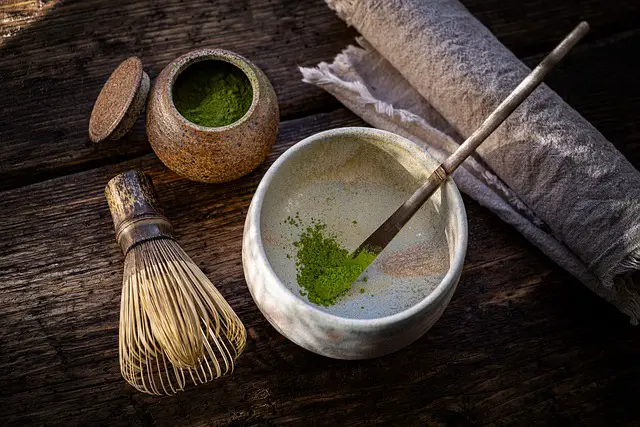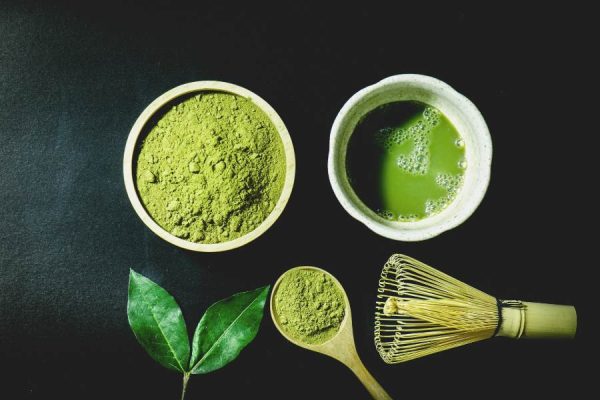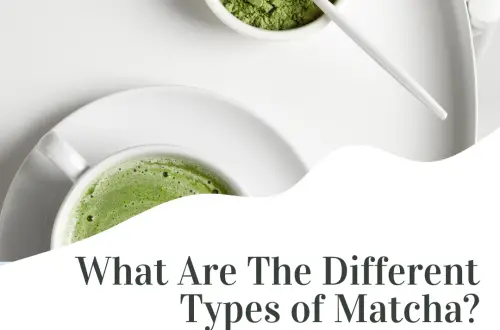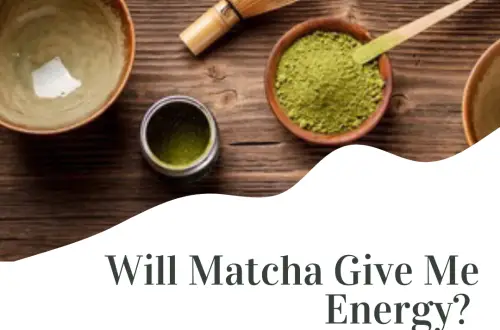If you’ve ever made a cup of matcha that turned out bitter, you’re not alone. Bitterness is a common issue that many people face when preparing matcha. The good news is that there are several factors that can contribute to bitterness, and by understanding them, you can take steps to ensure that your matcha is smooth and delicious every time.
One of the most important factors that can affect the taste of your matcha is the quality of the powder. Matcha that is made from high-quality tea leaves will generally have a smoother, sweeter taste than lower-quality matcha. Proper storage is also key to maintaining the quality of your matcha. Exposure to light, heat, and air can all cause the tea to degrade, which can result in a bitter taste.

Quick Navigation
Understanding Matcha
Matcha is a finely ground powder made from shade-grown green tea leaves. It has a distinct flavor that can be described as vegetal, nutty, and slightly bitter. The bitterness of matcha can be influenced by a variety of factors, including the quality of the tea leaves, the method of preparation, and personal taste preferences.
One of the main factors that can affect the bitterness of matcha is the quality of the tea leaves. High-quality matcha is made from young tea leaves that are plucked by hand and processed carefully to preserve their flavor and aroma. Lower-quality matcha, on the other hand, may be made from older leaves or may be processed using less care, resulting in a more bitter flavor.
Another factor that can affect the bitterness of matcha is the method of preparation. Matcha is traditionally prepared by whisking the powder with hot water using a bamboo whisk. The temperature of the water, the amount of powder used, and the speed and technique of whisking can all influence the flavor and bitterness of the resulting tea.
Finally, personal taste preferences can also play a role in the perceived bitterness of matcha. Some people may enjoy the slightly bitter flavor of high-quality matcha, while others may prefer a sweeter or milder taste. Experimenting with different preparation methods and adjusting the amount of powder used can help you find the perfect balance of flavor for your taste.
Importance of Quality
When it comes to matcha, the quality of the tea leaves used to make it is crucial. The quality of matcha can vary greatly depending on where it is sourced, how it is grown, and how it is processed.
Matcha made from lower quality leaves tends to be more bitter and astringent than matcha made from higher quality leaves. This is because lower quality leaves often contain more tannins, which can give the tea a bitter taste.
To ensure that your matcha is not bitter, it’s important to choose a high-quality matcha made from young tea leaves that have been shade-grown. Ceremonial grade is your best choice for high-quality matcha, and organic options are always worth considering. Shade-grown tea leaves are known to have a sweeter and more delicate flavor compared to those grown in full sun.
In addition, matcha that has been stone-ground to a fine powder is also generally of higher quality and has a smoother, less bitter taste. This is because the stone-grinding process helps to break down the tea leaves into a finer powder, which results in a more even and balanced flavor.
Investing in high-quality matcha may be more expensive, but it can make a big difference in the taste and overall experience of drinking matcha. By choosing a high-quality matcha, you can enjoy a smooth, sweet, and delicious cup of tea without any bitter aftertaste.
Proper Storage of Matcha
To ensure your matcha stays fresh and flavorful, proper storage is key. Here are some tips to help you store your matcha properly:
- Store your matcha in an airtight container to prevent exposure to air and moisture, which can cause it to lose its flavor and freshness.
- Keep your matcha away from heat, light, and strong odors, as these can also affect its flavor and quality.
- Store your matcha in a cool, dry place, such as a pantry or cupboard, away from direct sunlight and heat sources.
- Avoid storing your matcha in the refrigerator or freezer, as this can cause it to absorb moisture and odors from other foods.
By following these simple tips, you can help ensure that your matcha stays fresh and flavorful for longer.
Correct Preparation Methods
To achieve a smooth and mellow flavor in your matcha, it’s essential to prepare it correctly. Here are some tips on how to prepare matcha without making it bitter.
Use High-Quality Matcha
The quality of your matcha can significantly impact its taste. Low-quality matcha is often bitter and can ruin your matcha experience. Make sure to purchase high-quality matcha from a reputable source.
Use the Right Temperature Water
The temperature of the water used to make matcha is crucial. Using water that is too hot can cause the matcha to become bitter. The ideal temperature for matcha is between 160°F and 180°F. You can use a thermometer to ensure that the water is at the right temperature.
Sift the Matcha
Sifting the matcha before adding water can help to remove any clumps and ensure that it mixes smoothly. Use a fine-mesh sieve or a matcha sifter to sift the matcha into a bowl.
Use the Right Amount of Matcha
Using too much matcha can make it bitter. The recommended amount of matcha is one teaspoon or two grams per eight ounces of water. Adjust the amount of matcha based on your personal preference.
Whisk the Matcha Correctly
Whisking the matcha correctly is crucial to achieving a smooth and mellow flavor. Use a bamboo whisk to whisk the matcha in a “W” or “M” motion until it becomes frothy. Avoid over-whisking the matcha, as it can cause it to become bitter.
By following these tips, you can prepare matcha correctly and avoid making it bitter.

Effects of Water Quality
The quality of the water you use to make matcha can greatly impact its taste. If the water is too hard or has a high mineral content, it can make the matcha taste bitter or astringent. On the other hand, if the water is too soft, it may not extract enough flavor from the matcha powder, resulting in a weak and bland taste.
To ensure the best possible taste, it is recommended to use filtered or spring water when making matcha. Avoid using tap water, as it may contain chlorine or other chemicals that can affect the taste of the matcha.
You can also experiment with different types of water to find the best match for your taste preferences. Some people prefer using mineral water, as the minerals can enhance the flavor of the matcha. Others prefer using distilled water, as it has a neutral taste and will not affect the flavor of the matcha.
In summary, the quality of the water you use when making matcha can greatly impact its taste. It is recommended to use filtered or spring water and to experiment with different types of water to find the best match for your taste preferences.
Influence of Temperature
The temperature of the water you use to make matcha can significantly impact its taste. If the water is too hot, the matcha can become bitter. Here’s why:
When water is heated above 175°F (80°C), the amino acids in the matcha, such as L-theanine, start to break down. These amino acids are responsible for the umami, or savory taste, of matcha. When they break down, the matcha can taste bitter.
To avoid this, it’s best to use water that’s between 160°F to 175°F (71°C to 80°C) when making matcha. This temperature range is ideal for preserving the umami taste of the matcha while also extracting the flavor and nutrients.
It’s also important to note that the temperature of the water can affect the texture of the matcha. Water that’s too hot can cause the matcha to become grainy or clumpy, while water that’s too cold can result in a thin and watery texture.
To achieve the perfect temperature, you can use a thermometer to measure the water temperature or simply boil the water and let it cool for a few minutes before adding it to the matcha. With the right temperature, you can enjoy a smooth and flavorful cup of matcha.
Matcha Brewing Techniques
Matcha is a delicate tea that requires precise brewing techniques to achieve the best flavor. Here are two techniques that can help you brew a less bitter cup of matcha.
Whisking Technique
One of the most important factors in brewing matcha is the whisking technique. To avoid bitterness, it’s important to whisk the matcha powder into the water slowly and gently. Here’s how to do it:
- Begin by sifting your matcha powder through a fine-mesh strainer to remove any clumps.
- Heat your water to the appropriate temperature for your matcha grade (usually around 175°F).
- Add a small amount of hot water to your matcha bowl and whisk the powder into a smooth paste.
- Gradually add more hot water to the bowl while whisking gently in a zigzag motion.
- Continue whisking until the matcha is frothy and has a smooth, creamy texture.
By whisking slowly and gently, you can avoid creating too much foam, which can make the matcha bitter.
Sifting Technique
Another important technique for brewing matcha is sifting. Sifting the matcha powder through a fine-mesh strainer can help remove any clumps and ensure a smooth texture, which can help prevent bitterness.
To sift your matcha powder:
- Place a fine-mesh strainer over your matcha bowl.
- Add your matcha powder to the strainer.
- Gently tap the strainer to sift the powder into the bowl.
- Use a small spoon or whisk to break up any clumps that remain.
By sifting your matcha powder, you can ensure a smooth texture and avoid any bitter flavors that can result from clumps of powder in your tea.
Remember, brewing matcha is a delicate process that requires attention to detail and careful technique. By whisking slowly and gently and sifting your matcha powder, you can help ensure a smooth, delicious cup of tea every time.
Common Mistakes and Solutions
If your matcha is bitter, it could be due to a few common mistakes. Here are some solutions to help you fix the problem:
- Using low-quality matcha: If you use low-quality matcha, it will be bitter and unpleasant. Try using high-quality matcha to improve the taste.
- Using too much matcha powder: Using too much matcha powder can make your drink bitter. Use the recommended amount of matcha powder for the best taste.
- Using water that is too hot: If the water is too hot, it can burn the matcha and make it bitter. Use water that is around 175-180°F to avoid this problem.
- Not whisking properly: If you don’t whisk the matcha properly, it can become clumpy and bitter. Use a bamboo whisk to make sure the matcha is properly mixed.
- Not sifting the matcha powder: If you don’t sift the matcha powder, it can clump together and make your drink bitter. Sift the matcha powder before using it to ensure a smooth texture.
By avoiding these common mistakes and following these solutions, you can enjoy a delicious and smooth matcha drink without any bitterness.

Scott is the founder of TeaMinded. He enjoys tasting and discovering teas from across the globe, with green teas and ceremonial matcha from Japan being among his favorites. He’s grateful to be immersed in the tea community, always learning and sharing along the journey.






